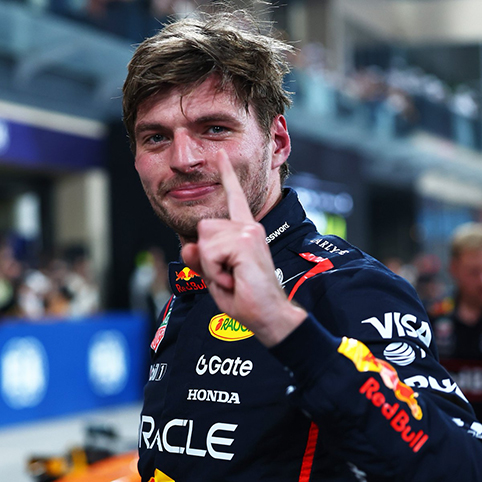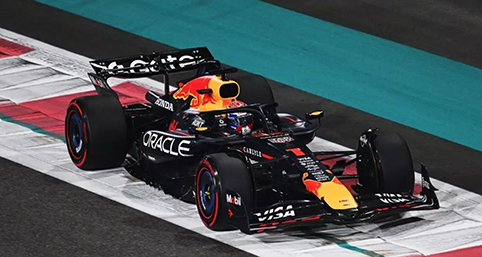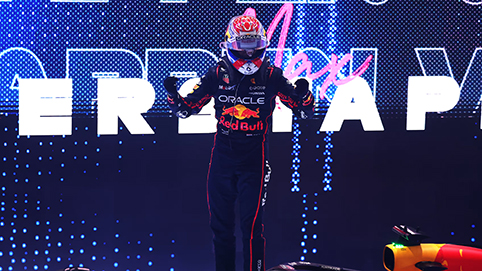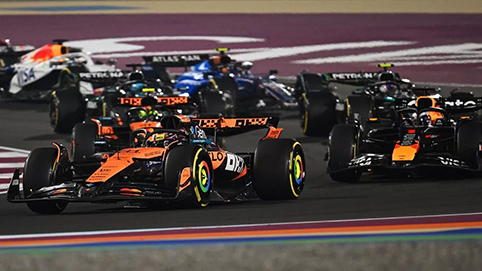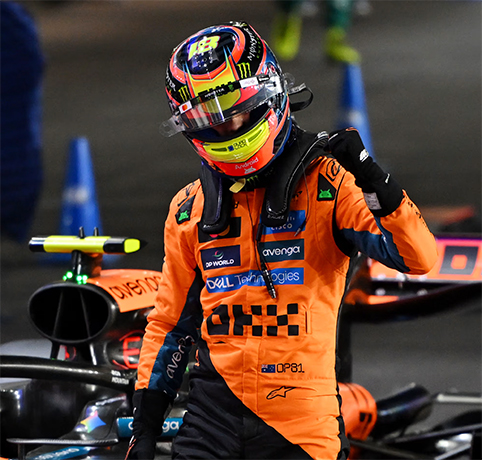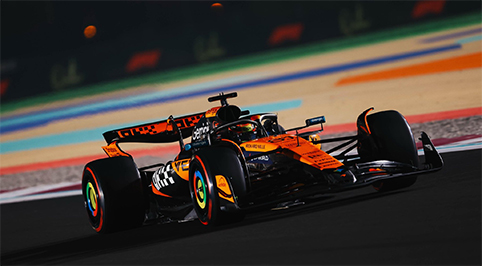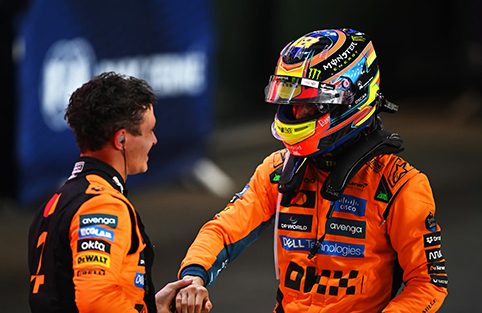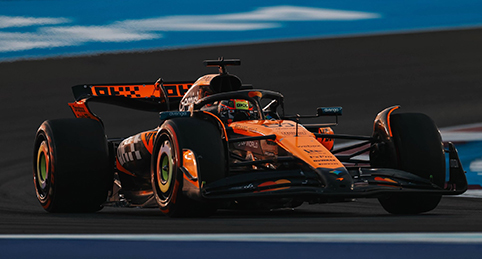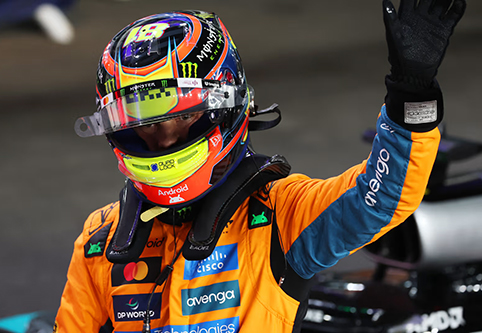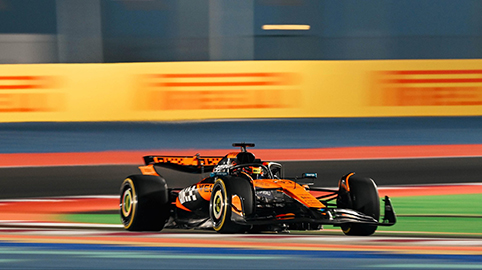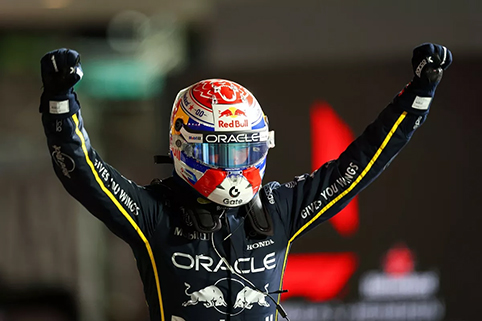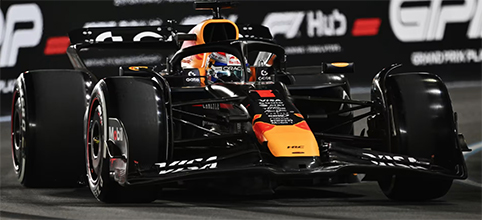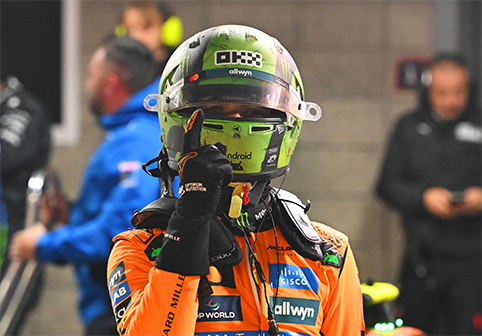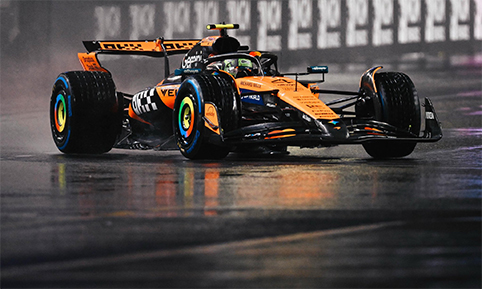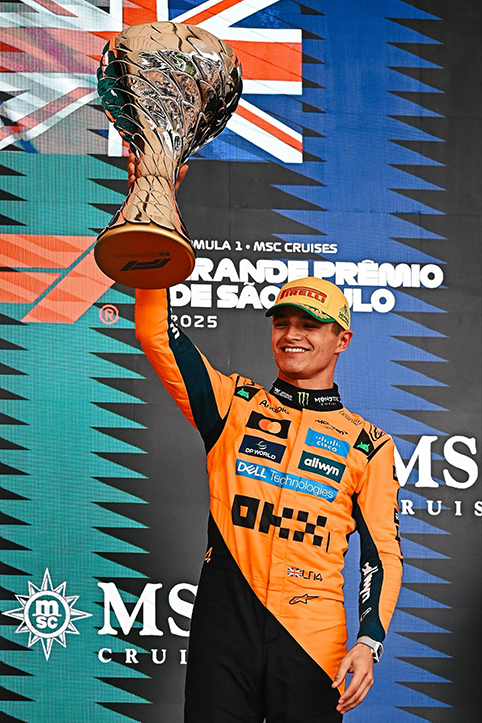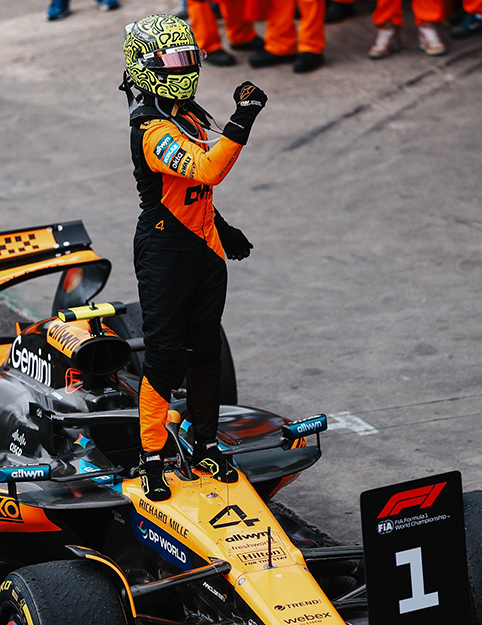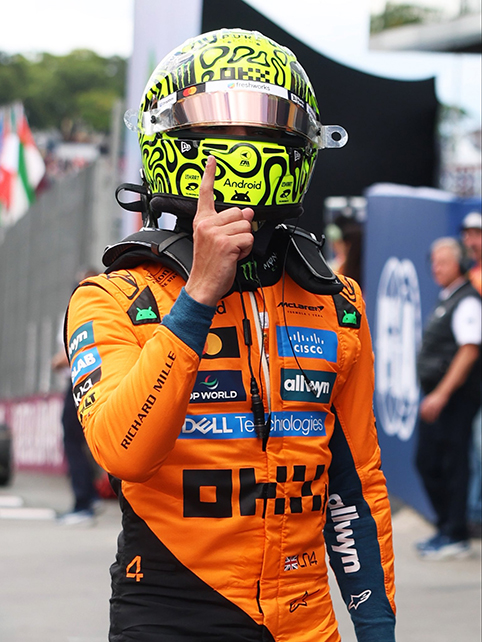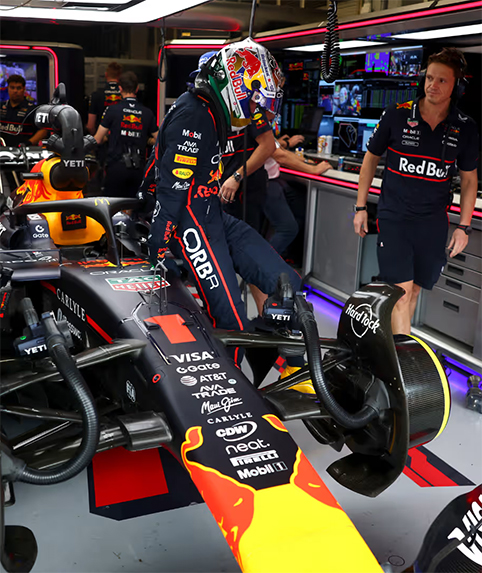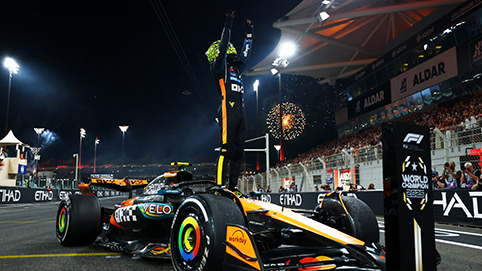
Lando Norris is the 2025 Formula 1 world champion after finishing third at the Yas Marina track as Max Verstappen signed off a competitive season of racing with race victory at the Abu Dhabi Grand Prix.
Norris only needed to secure a top-three result to secure the drivers’ championship, having started the race 12 points clear of Verstappen. And, although Norris lost a position to Piastri on the opening lap and thus came under heavy pressure from Charles Leclerc later on, he was able to stay in third to clinch his first world title.
Verstappen enjoyed a nice, serene drive to victory. With Piastri behind him instead of Norris, any anticipated hold-up play was not realised. McLaren’s decision to start Piastri on the hard tyre had ensured that the offset strategy spaced out the front three between the stops, and the McLaren driver went long into the race to pit on lap 41 once he was passed by Verstappen.
On fresh mediums, Piastri went after Verstappen in an effort to win the race. But Verstappen’s hard tyre pace was strong enough to maintain a healthy lead as Piastri brought the gap down to 12.6 seconds.
After batting away the early challenge from Leclerc, who put him under heavy scrutiny with DRS, Norris had stopped to cover off the Ferrari driver. This left Lando in a sea of traffic, but he was decisive. He cut through Andrea Kimi Antonelli and Alexander Albon in short order, then moved through Liam Lawson and Lance Stroll in a two-for-one move at Turn 6 to reduce the effect of the yet-to-stop runners ahead.
However, Yuki Tsunoda’s Red Bull proved to be the next obstacle. Told by his race engineer to “do what you can” to hold up Norris, Tsunoda weaved across the circuit on the straight between Turn 5 and 6, forcing Norris off-track as he was completing his overtake. The overtake itself was deemed fine by the race stewards, although Tsunoda was handed a five-second penalty for making more than one change in direction.
Once Norris was free of the traffic, he could start to reduce out a comfort zone as Leclerc’s early-stint pace began to subside versus the McLaren. Since covering off Charles was simply Lando’s priority, he was told to stop for a second time on lap 40 as Leclerc switched to a two-stopper on the previous lap.
Leclerc dropped behind the one-stopping George Russell, ensuring that Norris could get out of the pits with third intact, but the Ferrari’s early-stint pace on the mediums had given Norris a late pressure.
Thus, Norris responded to maintain the gap at around four seconds, which grew when Leclerc’s tyre life began to drop off in the final five laps – and it was simply a case of Norris holding on to ensure the title was his. Such was his pace, however, that he got within three seconds of Piastri before being told to take a little more easily in the final laps.
Despite pitting and coming out behind, Leclerc was 25 seconds clear of Russell as the Mercedes struggled with degradation after 44 laps on the hard tyre. Fernando Alonso was a further 18 seconds back, his sixth place ensuring that Aston Martin clinched seventh in the constructors’ championship ahead of Haas. Esteban Ocon ran to seventh, after making a decisive Turn 9 re-pass on Lewis Hamilton on lap 52 as the Ferrari went past at Turn 6.
Hamilton had recovered to eighth after being eliminated in Q1, his two-stopper yielding a points finish to sign off on a difficult first year with Ferrari.
Lance Stroll and Ollie Bearman finished ninth and tenth on the track, but both were given five-second penalties for making more than one change in direction in their on-track battle. This promoted Nico Hulkenberg to ninth, while Stroll was classified P10 ahead of Gabriel Bortoleto.
So congratulations to Lando Norris in become the eleventh British world champion after the success of Lewis Hamilton. Kudos to McLaren in winning both the drivers’ and constructors’ title.
As for Max Verstappen, winning the season finale was a nice sign off for Red Bull. The fifth title did not happen but he will feel satisfied that his good friend Lando Norris is the new champion of the sport.
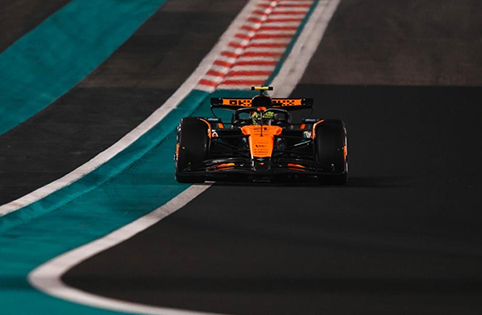
Abu Dhabi Grand Prix, race results:
1 Max Verstappen Red Bull 1:26:07.469
2 Oscar Piastri McLaren +12.594s
3 Lando Norris McLaren +16.572s
4 Charles Leclerc Ferrari +23.279s
5 George Russell Mercedes +48.563s
6 Fernando Alonso Aston Martin +67.562s
7 Esteban Ocon Haas +69.876s
8 Lewis Hamilton Ferrari +72.670s
9 Lance Stroll Aston Martin +74.523s
10 Oliver Bearman Haas +76.166s
11 Nico Hulkenberg Sauber +79.014s
12 Gabriel Bortoleto Sauber +81.043s
13 Carlos Sainz Williams +82.158s
14 Yuki Tsunoda Red Bull +83.794s
15 Andrea Kimi Antonelli Mercedes +84.399s
16 Alexander Albon Williams +90.327s
17 Isack Hadjar Racing Bulls +1 lap
18 Liam Lawson Racing Bulls +1 lap
19 Pierre Gasly Alpine +1 lap
20 Franco Colapinto Alpine +1 lap
